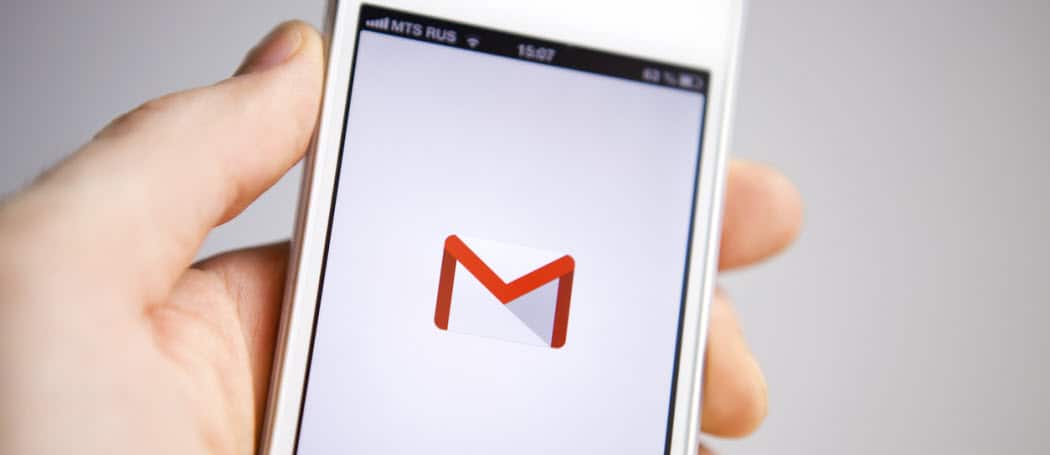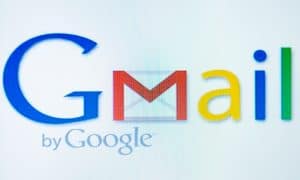What is Gmail? A Starter Guide for Email Beginners

If you’re new to the Internet and have heard about Gmail but aren’t quite sure about it, here is a closer look at what it is and what it has to offer.
I remember my first email address back in 2000. It was a Yahoo address. It was a glorious moment to start emailing people and get a response back lightning fast. No more parchment and quill or carrier pigeons! But then 2004 came along.
What happened in 2004? Google introduced Gmail, and as Google often likes to do with their products, they totally up-ended the industry. Pre-Gmail, you got a paltry amount of space for emails, and you were expected to suck it up and like it. But now Gmail was offering one gig of space on an invite-only basis. I was ready to sell my grandmother that day for a Gmail invite (and I love her dearly).
Since 2004, Google has continued to work on Gmail so much that it is a powerhouse in the email industry and has crushed lesser mortals. Continuing on in our series for internet newbies, we today take a look at the question “what is Gmail exactly?”
What is Gmail?
Glad you asked because I was just about to tell you. Gmail is Google’s email service, but I won’t go so far as to tell you what email is. I think virtually everybody on the planet knows what email is. You can access it through the web or through a smartphone app.
The basic service is free to use and more than sufficient for most people’s needs. But business people may need to upgrade to the paid Google Office, which powers your website email and provides Google services for your domain. But that is outside the scope of this article. Today we are only focusing on the free service for regular mortals.


What Makes Gmail Better Than the Rest?
Obviously, there are many email services out there other than Gmail. Yahoo Mail is still in ghostly form, as well as Windows Live Mail, Outlook, GMX, Protonmail, Yandex, AOL (believe it or not), and many others — including the account provided by your ISP. So why choose Gmail for your emailing needs? Let’s take a look at some of the features.
Huge Amounts of Space
As I said at the beginning, you got a tiny amount of space before Gmail came along. Not happy? So what? Delete a few emails, make space, and stop complaining.
But when Gmail arrived, they gave one gigabyte of space to users, and it just kept going. At the time, it was so much space that people considered it as “unlimited storage.” They couldn’t wrap their heads around the fact they had so much. Some bloggers at the time started advocating using Gmail as an online file storage system. Remember, there was no cloud storage back then.
Suddenly every email service had to scramble to catch up with their storage offerings. A few megabytes of space wasn’t going to cut it anymore.
Today, each new Gmail account has 15 gigabytes of storage, but the downside is that the 15 gigabytes also count towards your files in Google Drive and photos in Google Photos. If you need more space, you should upgrade your Google Drive space which you can also use for Gmail. I do this, and I have over 100 gigabytes of space now.
Great Search Functions
One of the great things about having all of that space is that you can archive emails and forget about them. But what if you need to find a particular email later?
Well, Gmail wouldn’t be a Google product without an outstanding search function to go along with it. Adding a few search keywords in the search box can find emails and attachment types (such as emails with only PDF attachments). You can filter by date, sender email, date range, label, and many more.


Advanced Spam & Phishing Protections
Spam has been a continual thorn in the side of email users since the first email addresses started being used. Who hasn’t been offered cheap viagra from Canada or a share of ten million dollars from a Nigerian prince?
Gmail has always had very good spam protections, which stops the worst of the spam from getting through. Obviously, it is not perfect – nothing ever is – but it learns when you hit the spam button on an email. All future emails from that person will be marked as spam and sent to the spam folder.


Likewise, if you see something in the spam folder which is not spam, you can easily mark it as a false positive and send it to the inbox.
If a link inside an email looks suspicious or Gmail has had reports of the link causing trouble, you will get a prominent warning at the top of the email. Another tip is to disable automatic image loading in Gmail to disable hidden trackers inside the email.
Speaking of security, the company also recently added the ability to protect your messages using its Confidential mode feature.
Canned Replies
For someone like me who gets a lot of emails that require repetitive answers, “Canned Replies” is a productivity Godsend. You can set up pre-written emails, and one click of a menu option will automatically paste that text into the email.
So when I get story pitches from marketers, I can set up a canned reply telling them my email address does not exist, and the email failed. I can send my job application text when I apply for a freelance assignment. I also have my automatic signature as a canned reply.


Multiple Inboxes
If you have a lot going on in life, such as work, you may find it helpful to have multiple inboxes on your screen. This is where emails from different labels appear on the inbox screen.
The emails themselves are actually archived, but they show up on the inbox page, provided it has the necessary label. This is not provided as a default feature. You must switch it on in the “Advanced” tab of Settings.


Labels & Filters
Pre-email, you probably dealt with a lot of paper and probably stored all that paper in a filing cabinet. Millennials, you’re probably lost right now with all this advanced terminology, so click here for clarification.
Now you can keep emails in your inbox and archive organized by using labels. These labels appear on the left side of the screen and can be color-coded. You can also search solely for a particular label. See the screenshot in the previous section for an example of my labels.


Labels can be removed from emails at any time and can be attached to emails in large batches.


As for filters, this makes all the difference if you are looking to have a stress-free and uncluttered inbox. Incoming emails can be sent directly to labels or directly to the trash bin. If an email is constantly going to the spam bin, a filter called “never send to spam” can be used. Filters are available to forward emails to other addresses or services, such as Slack or Kindle.
Gmail Apps
This one deserves an article of its own, as there is so much to explore. But to cut a long story short, Google is now allowing third-party developers to allow their apps to integrate with Gmail.
This can be big names such as Trello and Dropbox. Or smaller people such as Streak and GfyCat. With the smaller companies, you should exercise a lot of caution about what permissions you grant them to your email. Nevertheless, these add-ons are seriously useful.


Offline Gmail
Not every place in the world has the Internet. I know, it’s unbearable to think about, isn’t it? Whenever my phone says “No Internet Connection,” suddenly I have trouble breathing. As the saying goes, “Home Is Where The Wi-Fi Automatically Connects.”
Having no Internet can be annoying, especially if you have a flaky service provider. That’s why Offline Gmail is such a great feature. By switching it on in the settings, you can download a certain number of emails to your computer (up to 90 days) and reply to emails in your inbox.
But they obviously won’t send it out to people until your Internet comes back on. Neither will you get new emails until your connection is back. But at least you can clear your backlog.


Keyboard Shortcuts
Another feature of the “Advanced” tab in Settings, you can use keyboard shortcuts to open a new email window, scroll backward and forward through your inbox, archive, delete, and much more.
After enabling the feature, go to the Keyboard Shortcuts section in Settings. Pre-made settings are already there, but if there is one you don’t like, you can change it to something else.


Conclusion
There are many other features in Gmail, but for a beginner, these are the ones you should initially focus on. I haven’t even delved yet into Undo Send, bookmarking individual emails and folders. Google is constantly building on its email service, so it’s worth getting an account and taking advantage of what they offer.
Want to take things further? Consider adding an image to your Gmail signature.




